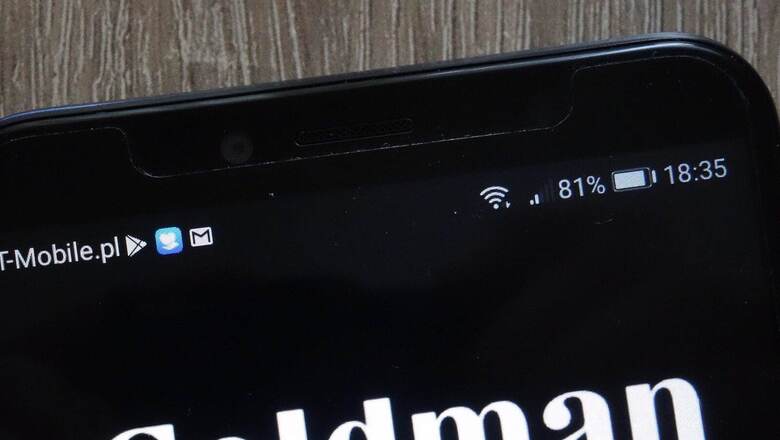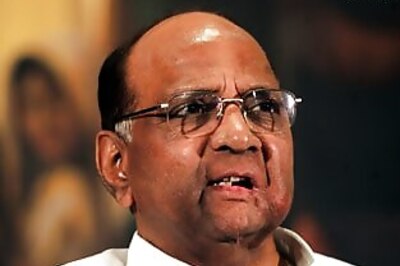
views
This past winter, Goldman Sachs was closing in on a $40 million investment in Ozy, a digital media company founded in 2013, and there seemed to be a lot of reasons to do the deal. Ozy boasted of a large audience for its general interest website, its newsletters and its videos, and the company had a charismatic chief executive, Carlos Watson, a onetime cable news anchor who had worked at Goldman Sachs early in his career. And, crucially, Ozy said it had a great relationship with YouTube, where many of its videos attracted more than a million views.
That’s what the Zoom videoconference on Feb. 2 that Ozy arranged between the Goldman Sachs asset management division and YouTube was supposed to be about. The scheduled participants included Alex Piper, the head of unscripted programming for YouTube Originals. He was running late and apologized to the Goldman Sachs team, saying he’d had trouble logging onto Zoom, and he suggested that the meeting be moved to a conference call, according to four people who were briefed on the meeting, all of whom spoke on the condition of anonymity to reveal details of a private discussion.
Once everyone had made the switch to an old-fashioned conference call, the guest told the bankers what they had been wanting to hear: that Ozy was a great success on YouTube, racking up significant views and ad dollars, and that Mr. Watson was as good a leader as he seemed to be. As he spoke, however, the man’s voice began to sound strange to the Goldman Sachs team, as though it might have been digitally altered, the four people said.
After the meeting, someone on the Goldman Sachs side reached out to Mr. Piper, not through the Gmail address that Mr. Watson had provided before the meeting, but through Mr. Piper’s assistant at YouTube. That’s when things got weird.
A confused Mr. Piper told the Goldman Sachs investor that he had never spoken with her before. Someone else, it seemed, had been playing the part of Mr. Piper on the call with Ozy.
When YouTube learned that someone had apparently impersonated one of their executives at a business meeting, its security team started an investigation, the company confirmed to me. The inquiry didn’t get far before a name emerged: Within days, Mr. Watson had apologized profusely to Goldman Sachs, saying the voice on the call belonged to Samir Rao, the co-founder and chief operating officer of Ozy, according to the four people.
In his apology to Goldman Sachs and in an email to me on Friday, Mr. Watson attributed the incident to a mental health crisis and shared what he said were details of Mr. Rao’s diagnosis.
“Samir is a valued colleague and a close friend,” Mr. Watson said. “I’m proud that we stood by him while he struggled, and we’re all glad to see him now thriving again.”
He added that Mr. Rao took time off from work after the call and is now back at Ozy. Mr. Rao did not reply to requests for comment.
Marc Lasry, a hedge fund manager, a co-owner of the Milwaukee Bucks basketball team and chairman of the Ozy board, said in a statement: “The board was made aware of the incident, and we fully support the way it was handled. The incident was an unfortunate one-time event, and Carlos and his team showed the kind of compassion we would all want if any of us faced a difficult situation in our own lives.”
While the explanation satisfied the company’s board, which did not formally investigate, it did not answer all the questions the incident raised. Even in an industry known for smoke and mirrors, Ozy has for years raised eyebrows over its claims about its audience size. And one nagging question in this era of spectacular booms and busts is where, exactly, the line is drawn between fake-it-til-you-make-it hype (Tesla!) and possible fraud (Theranos!). That line is often blurry and comes into focus only in retrospect. Early fluffery can be excused by later success. And since, unlike Theranos, nobody is drawing literal blood in the media business, high-profile investors may not be expected to do all that much homework.
One thing is evident, though: Trying to fool the world’s most famous bank, even by the hype-ridden standards of the media business, is way over the line.
A Gen X Media Dream
Ozy was born in 2013 as a Gen X dream of what millennial media ought to be: earnest, policy-focused, inclusive, slickly sans-serif. Other ventures of the same era, Mic and Fusion, projected similar images.
Ozy’s public face was Mr. Watson, the son of a working-class Jamaican family in Miami and a graduate of Harvard University and Stanford Law School. In addition to his early-career stop at Goldman Sachs, he worked at McKinsey & Company and was an anchor on MSNBC for part of 2009. His co-founder, Mr. Rao, also came from Goldman Sachs, via Harvard.
Mr. Watson raised the money to start Ozy from a list of blue-chip friends. Laurene Powell Jobs, who had co-founded a college prep nonprofit with Mr. Watson in 1997, invested and joined the Ozy board. The Silicon Valley venture capitalist Ron Conway also invested, as did David Drummond, who was then Google’s chief legal officer.
Ben Smith c.2021 The New York Times Company
Read all the Latest News , Breaking News and Ukraine-Russia War Live Updates here.




















Comments
0 comment